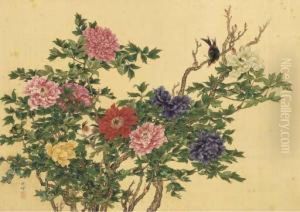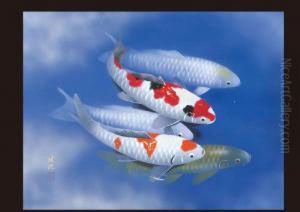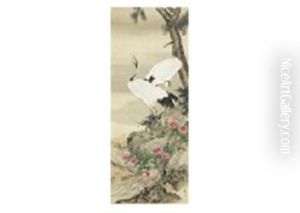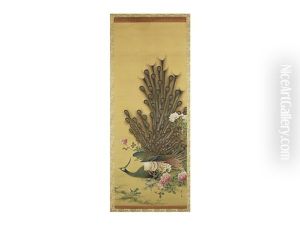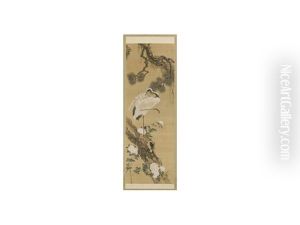Okamoto Shuki Paintings
Okamoto Shuki was a Japanese ukiyo-e artist known for his paintings and woodblock prints. Born in 1771, he was active during the Edo period, a time when Japan was under the rule of the Tokugawa shogunate, and the nation was largely isolated from the outside world. This period saw a flourishing of the arts, particularly in the cities of Edo (modern-day Tokyo), Osaka, and Kyoto, where a merchant class was growing in wealth and cultural influence.
Shuki was a pupil of the famous ukiyo-e master Katsukawa Shunsho, who was known for his portraits of kabuki actors, sumo wrestlers, and beautiful women—themes that were popular in the ukiyo-e genre. Under Shunsho’s guidance, Shuki honed his skills and developed his own style, which was distinguished by its delicate lines and clear colors. He contributed to the world of ukiyo-e with a focus on similar subjects that were prevalent among his contemporaries, such as bijinga (pictures of beautiful women) and yakusha-e (pictures of actors).
Although Okamoto Shuki was not as prolific or as famous as other artists of his time, like Katsushika Hokusai or Utagawa Hiroshige, his works still provide valuable insights into the cultural and artistic dynamics of the Edo period. His prints and paintings are now considered important by art historians and collectors who have an interest in this period of Japanese art.
Shuki's career was cut short when he died in 1833, at the age of 62. Despite his relatively short life, he managed to make a lasting impact on the ukiyo-e tradition. His works are preserved in various art collections and museums around the world, allowing contemporary audiences to appreciate the legacy of Edo period art through his unique perspective.
